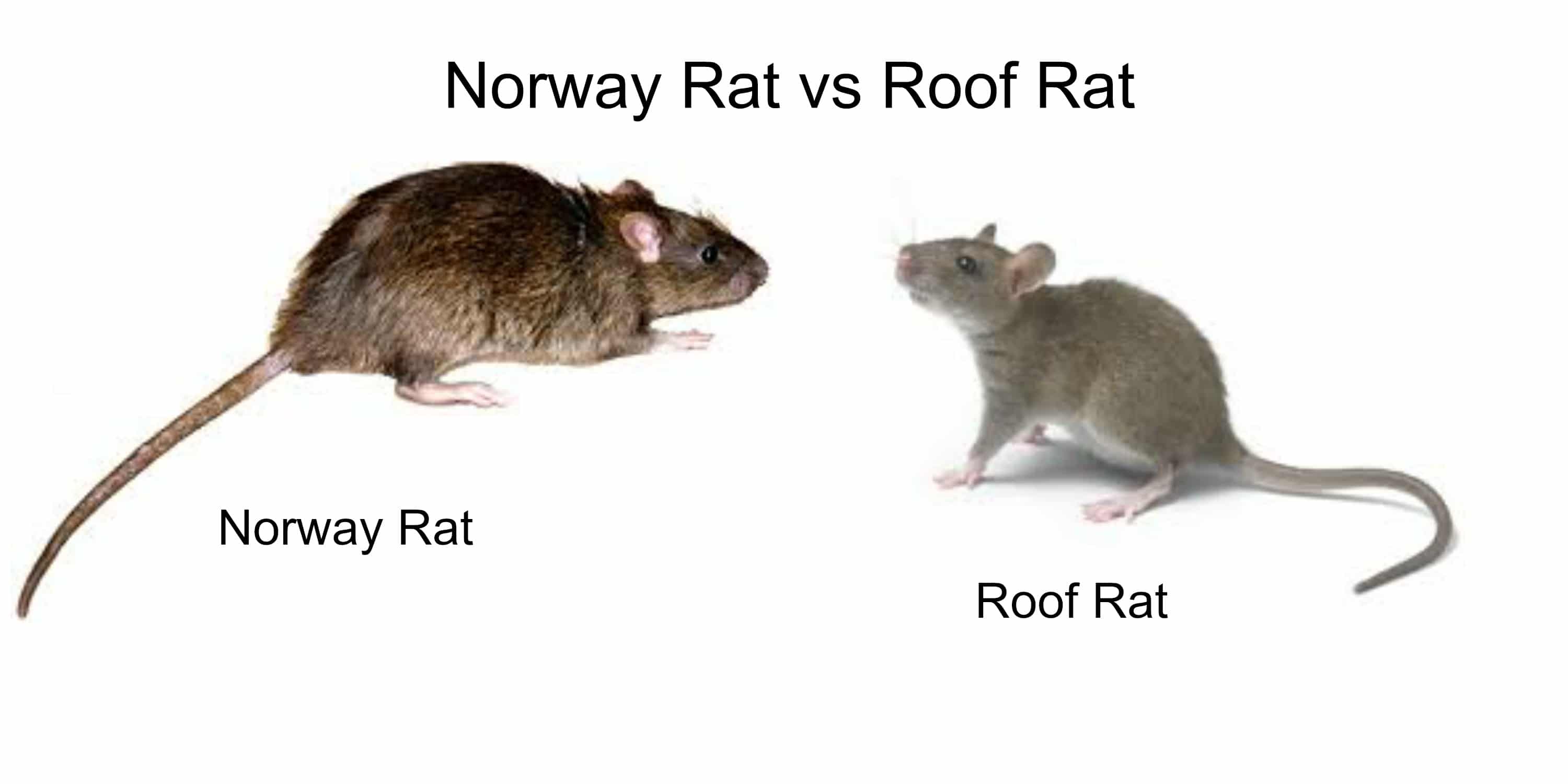Table of Contents
The answer to this question is—yes and no. Roof rats are excellent wall climbers, while Norway rats aren’t very good climbers at all. Norway rats are known to be much slower, larger in size, and less athletic than their Roof rat cousins.
The scientific study article “Tree-climbing capabilities of Norway and ship rats,” published in 2011, tested Norway and Roof rats’ (ship rats) abilities to climb. They confirmed that ground-dwelling Norway rats are more willing to give up when an obstacle is placed in front of them. They also confirmed that Norway rats could slowly climb to the same heights and across the same thin strings and surfaces as a Roof rat.
Roof rats, unlike Norway rats, are urban athletes when it comes to being able to scale walls. The question begs, how do rats climb? Roof rats are smaller than the Norway rat and also have a longer tail. The Norway rat’s tail is longer than the length of its head and body. This long tail allows it to balance thin utility wires, tricky walls, and other surfaces. Their light bodies, long tails, and claws allow them to climb up a tree’s bark or a utility line as a foothold to travel to other high-up places.
Can rats climb walls or glass?
Rats, in general, cannot climb smooth walls or glass. If you’ve ever had a dead rat inside your wall, you’ll know that there’s a chance that the rat got trapped there because they fell into a closed-off wall space where there wasn’t a foothold to get out. The same reasoning goes for glass windows—rats can’t climb on that kind of surface. Rats rely on uneven scaling surfaces such as nails, brick, wood, piping, or other various objects or surfaces that are rough in texture such as bark. This video will show you that a rat can scale a wall like it’s doing parkour.
Can they climb concrete walls?
Yes, rats can climb concrete walls around your home because the concrete or even brick surface is rough enough for them to grab onto. Having stacked bricks or concrete that staggers in design is a good foothold for rats to attach to and essentially rock climb upwards to the next reachable point. If they can reach it, they will climb it.
Can rats climb fences?
Yes, rats can climb fences. Actually, it’s one of the main ways they get around. In the city, many fences are made from chain links, concrete, wood, and even vinyl. These are easy to climb up because they can easily reach them. Chain link is easy to climb up and walk along due to its stability and grab-able design.
Concrete, wood, and vinyl fences and walls are scalable by rats because they are textured surfaces or have a design that enables climbing. Vinyl can be smooth but can have other parts that make the fence or wall easy to climb onto. Think of fences as an elevator and a gym for rats.
Can they climb on beds or any other household items?
If you have a raised bed or a bed that’s on the floor, futon, mattress, box spring, or standard bed frame—rats can climb onto beds. If they can reach a bedpost at their level, grab a sheet or blanket, or climb onto something else, then they can access your warm and cozy bed.
A research article “The importance of burrowing, climbing and standing upright for laboratory rats” that was published in 2016 informs that Norway rats can grow to a height of 22 cm or 8 inches at 2.5 months, and are 26 to 30 cm or stand at about 10 to 11 or more inches as an adult.
If you have rats in your home, garage, farm, or business, this means that rats can reach beds, couches, ottomans, dressers, desks, tables, chairs, computers, and other household items that are susceptible to the 8 to 11 inch reaching and climbing space of rats.
Can rats climb upside down or swim?
Rats can indeed climb upside down as long as they hold onto something like pipes that are reachable or have a textured surface that they can grab with their claws. Rats have been shown to climb vigorously, wiggle, and chew their way into sewer systems (if their head fits, their body does too). They can also enter buildings through those water and waste ways because rats are great swimmers. The US Fish & Wildlife Service says some rat species can swim more than a mile and tread water for 3 or more days. Unsuspecting people have even found rats swimming inside their toilets, pools, and ponds.
Can they climb stairs?
Yes, if they can reach up towards the carpeting, wood, banister, or wall, they can climb upstairs. In the United States, steps and stairs are designed to be 7 ¾ inches in the rise (vertical) and 10 inches in the run (horizontal). Roof rats can grow to be 13 to 18 inches in length, and Norway rats can grow up to be more than 20 inches from head to tail. They can definitely make it up those stairs.
Can rats jump?
How high can rats jump? Wild rats are known to jump 36 inches vertically and are able to jump 48 inches horizontally. Their jump reach can go up to 15 inches. Rats often times use trees and branches to jump onto the roofs of houses. They can survive an 8-foot jump from a tree to a roof, as long as the branch or tree is 15 feet above the ground or above the house’s height.
Conclusion
Rats are small, hairy, and disgusting little athletes that can climb walls, fences, beds, desks, and anything their little claws can grab onto. Wild rats are even known to climb upside down, climb stairs, jump, swim through pipes, and even invade our toilets. Don’t be fooled; rats can get anywhere where there is a will and a way.





